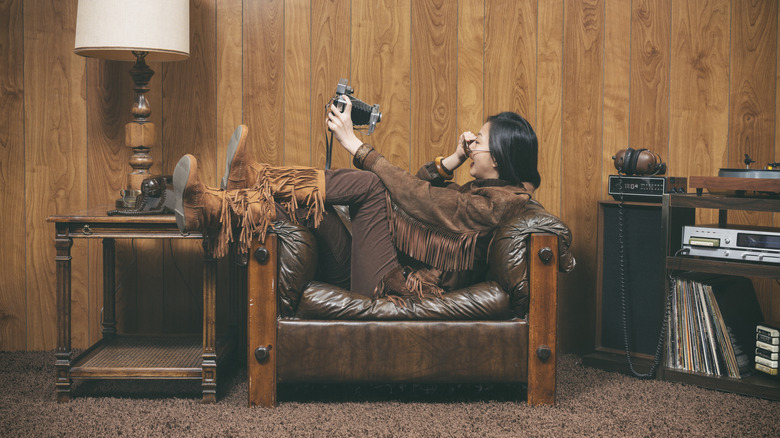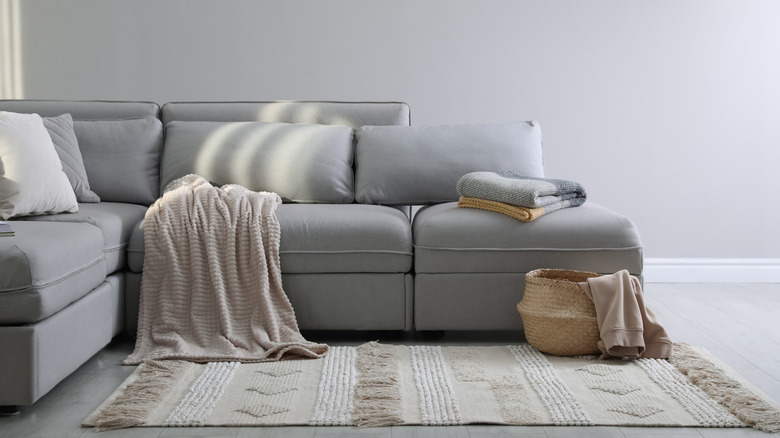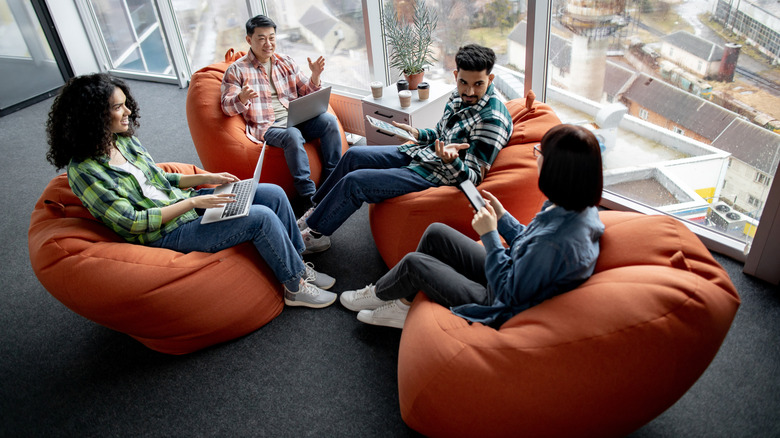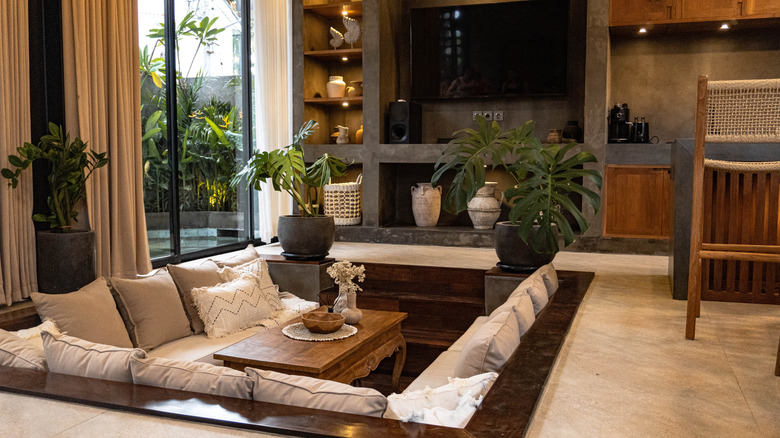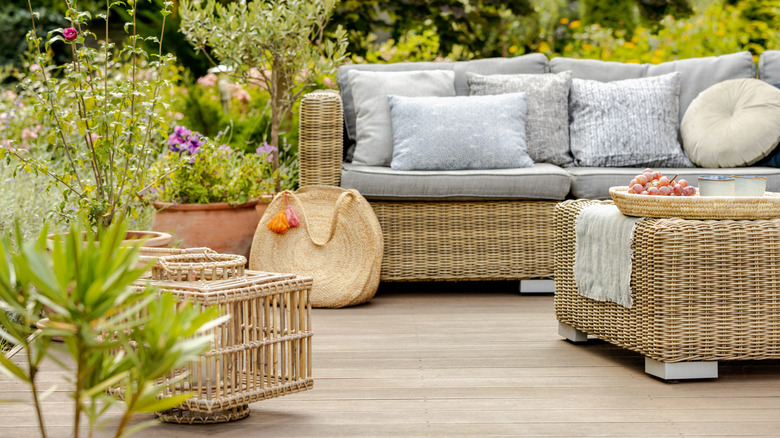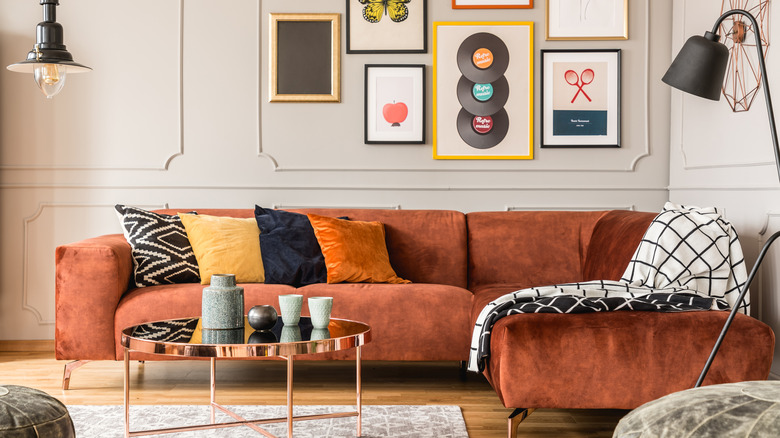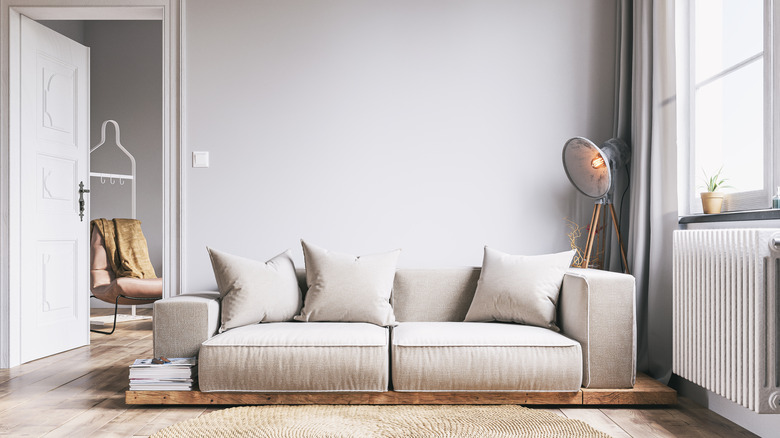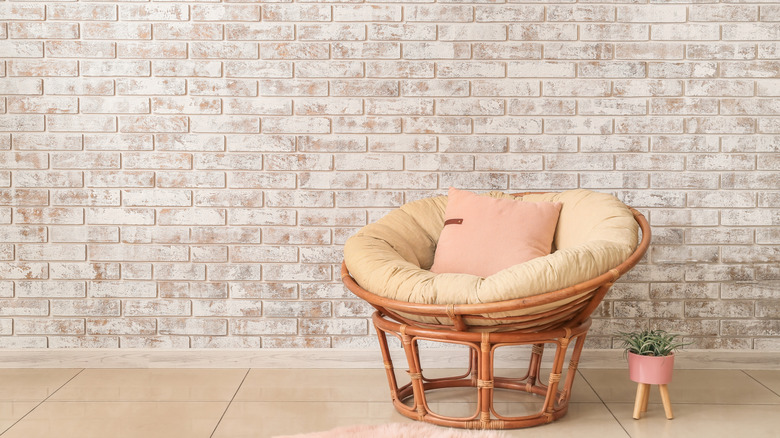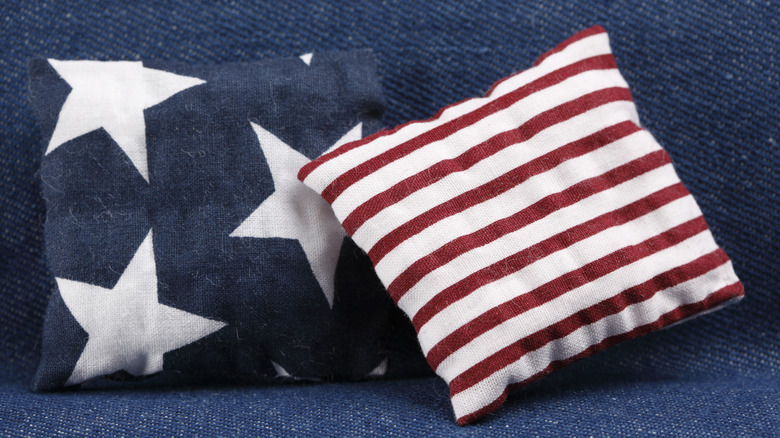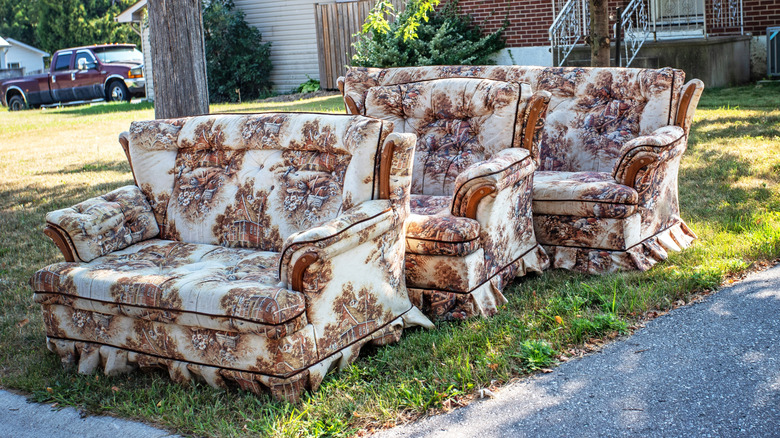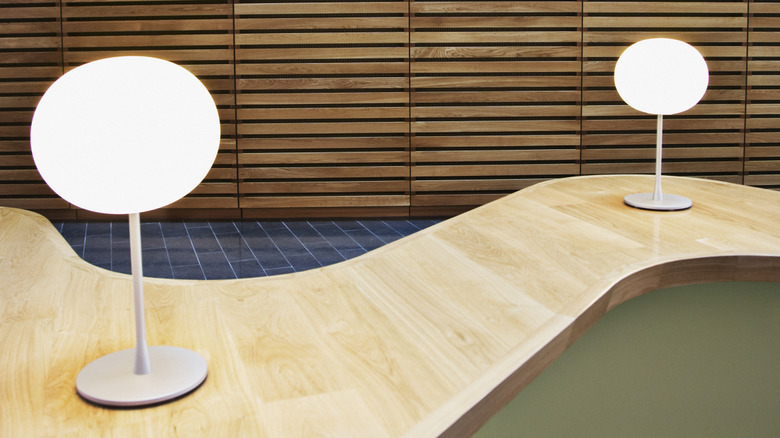11 Cozy Furniture Trends From The 1970s That Are Still Practical And Stylish
Whether you were alive during the 1970s or not, there's probably a lot that you associate with the groovy decade that brought us bellbottoms, disco balls, and platform shoes. From the music of the Bee Gees, Pink Floyd, and Queen, to women's rights and the anti-war movement — this was a decade defined by flipping cultural norms and embracing the "far out" and new.
One of those radical '70s things we love? The trailblazing home decor, of course. While there's plenty of stylistic aspects from the era that we'd happily leave in the past (like carpeted bathrooms, for example), there are plenty of 1970's deign trends we still love today. One of our favorites is definitely the furniture. From plush upholsteries to the delightful comfort of a good bean bag chair, here are 11 furniture trends from the 1970s that continue to have a place in both stylish and practical 21st century homes.
Modular furniture
Modular furniture — i.e. pieces that can be moved around to accommodate whatever shape of couch or formation you need — were incredibly popular in the 1970s, and for good reason. It's a flexible and stylish couch and chair model that allows homeowners to mix and match and readjust the layout of seating however they like. Known as sectionals today, modular furniture is still providing large amounts of adjustable seating for modern homes.
Bean bag chairs
If you're of a certain generation, bean bags probably scream "1990s" to you. But they actually got their start in the 1970s, first appealing to the counterculture movement before going mainstream and appearing everywhere from Sears to JC Penney catalogs as a shapeless-yet-comfy alternative to conventional chairs. And today, bean bag chairs aren't just fun seating options for kids; they can be snuggly yet chic, and make cute seating in living rooms, are perfect for cozy reading corners, and can be used as video game chairs for the gamer in your home.
Conversation pits
Yes, conversation pits had their pitfalls (in some cases, literally, as a falling hazard), but having a hole full of furniture in your living room where you could hunker down and chat with guests and loved ones was totally in vogue in the 1970s. We're seeing a resurgence in sunken living rooms today as a stylish spot for people to gather screen-free, with some people even attempting to DIY a trendy faux conversation pit without digging out their floor.
Wicker furniture
Wicker furniture made out of rattan material became popular in the 1960s and 1970s, appealing to homeowners with its bohemian vibe and natural feel. In addition to looking great, people loved it because it was so versatile and could be used anywhere from patios to indoor spaces. It's also easy to clean and more environmentally-friendly than other furniture choices — just some of the reasons why you're still likely to find wicker chairs and tables in homes today.
Plush and velvet upholsteries
Nothing says "elegance" quite like velvet. Of course, velvet has been around for centuries, and was long considered a luxury item found in the homes of the noble and rich. But in the 20th century it became more accessible, and folks in the 1970s couldn't get enough of it on clothes as well as couches and chairs. Today, if you're looking for upholsteries that look and feel fabulous, it's still a stylish go-to, and works well with the modern maximalist aesthetic.
Low-slung couches
With platform beds, bean bag chairs, and conversation pits being all the rage — it seems people in the 1970s liked being low to the ground. If you couldn't commit to a sunken living room, however, you could get down by reclining in a low-slung couch. In fact, low profile seating that's closer to the ground is one of those decor trends from the '70s that look even cooler today and works great especially in smaller spaces to help the room feel more open and inviting.
Pod chairs
There's something comforting and cozy about feeling cradled in a pod chair — which is perhaps one of the chief reasons why this groovy design has withstood the test of time. These chairs, also known as ball chairs or egg chairs, came into popularity in the late '60s and endured into the mid '70s. While a lot has changed over the decades, the love of a stylish pod chair has endured.
Papasan chairs
In the 1970s, if you weren't being cradled by a pod or bean bag chair, you were probably nesting in a papasan chair. Made popular by retailer Pier 1, papasan chairs were made from rattan, which was a popular '70s material. They were not only chic, but perfect for lounging. Today, these chairs are a great way to incorporate both vintage and boho vibes into your space.
Denim-clad furniture
The '70s was all about championing casual and comfortable living, and that meant that denim — which was all the rage — also found its way onto home furnishings. Just as the pants have endured, so has using denim in home decor. But if matching your jeans to your furniture is a little much for you, there are lots of ways to embrace the denim decor trend without committing to an all-denim couch, such as incorporating small denim accents like a throw pillow.
Bold patterns
Today, bold patterned furniture is the living room trend that no one saw coming. But in the 1970s, everyone and their grandma (in fact, especially the grandmas) had a cushy velour couch covered in eccentric designs and busy floral patterns — often in a bold color palette of avocado greens, burnt oranges, mustard yellows or other groovy '70s shades. These couches seemed almost invincible, so you can still find many in good shape today. The only question is: you should embrace the vintage pattern, or re-cover it with a more modern print?
Curvy furniture
Psychedelic curves and curls weren't just for '70s art and patterns. Furniture with lots of sumptuous curves instead of straight lines were all the rage, and it's a groovy trend that has come back in style in 2025. So instead of traditional couches, try something with a bit of sway; and instead of consoles with sharp edges, why not opt for a piece with rounded corners? Bonus: This is an easy way to make furniture kid-friendly, and save your own shins from scratches, too!
